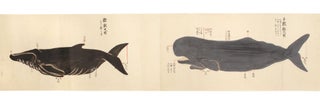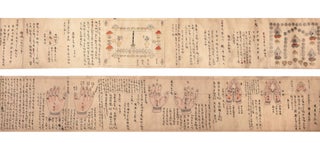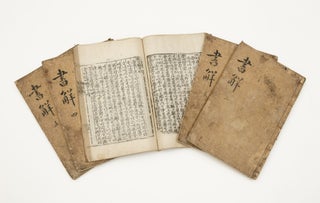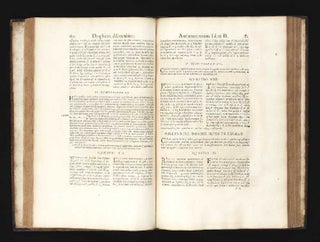![Item ID: 6508 L’Art de conserver les Grains, par Barthelemy Inthiery. Ouvrage traduit de l’Italien, par les soins de M. D.N.E. [Louis Joseph Bellepierre de Neuve-Église], ancient Officier de Cavalerie. Ferdinando GALIANI.](https://jonathanahill.cdn.bibliopolis.com/pictures/6508.jpg?width=768&height=1000&fit=bounds&auto=webp&v=1551656700)
The Freedom to Trade Grain
L’Art de conserver les Grains, par Barthelemy Inthiery. Ouvrage traduit de l’Italien, par les soins de M. D.N.E. [Louis Joseph Bellepierre de Neuve-Église], ancient Officier de Cavalerie.
Seven folding engraved plates. 1 p.l., iv, [2], 103 pp. 8vo, cont. mottled sheep (head & foot of spine a little defective), spine gilt. Paris: Saugrain le jeune, 1770.
First edition in French of the great economist’s Della Perfetta conservazione del Grano. Discorso (Naples: 1754). Like the first edition, ours was published under the name of Bartolommeo Intieri (1676-1757), economist, engineer, and mathematician, who had furnished his friend Galiani with the ideas on methods to prevent grain from being contaminated by insects. Intieri proposed that grain be dried in a heated kiln. This process would dissipate bad odors, eliminate humidity, kill most insects, and check the disposition of the grain to germinate and ferment while in storage or in transit.
Although Galiani wrote the text, he had Intieri’s name placed on the title-page to properly honor the aged and nearly blind scientist for his invention of the kiln stove in 1728. In spite of this, it was widely known that Galiani was the author. The book was also the cause of controversy between Galiani and Duhamel du Monceau. Galiani accused the French scientist of appropriating Intieri’s system and publishing it as his own, in his successful and famous Traité de la Conservation des Grains (1753), and not properly crediting Intieri or Galiani.
“In the 1750s, just at the time that the question of grain and flour conservation began to attract careful attention in France from scientists such as Duhamel du Monceau and victualers and grain dealers such as Pâris-Du Verney, Leray de Chaumont [an international trader and shipper], and Pierre Malisset [the most innovative baker of the time], Galiani published a treatise on this subject. While Della perfetta conservazione del grano did not have the long-term intellectual significance of Della moneta, it addressed a problem of far more concrete and immediate interest to administrators devoted to preventing dearth and to producers and traders intent upon causing it. Ostensibly a purely technological matter, the conservation problem pointed directly to broader political questions about the rules governing the grain provisioning trade.”–Kaplan, Steven Laurence, ed., “Introduction” to La Bagarre: Galiani’s “Lost” Parody, p. 18.
The fine plates depict various aspects of the kiln.
Our edition is very rare; WorldCat locates no copy in North America. Apart from the wear to the ends of the spine, a very nice copy. Faint stamp of the Lawes Agricultural Trust on free front-endpaper.
❧ See Musset-Pathay, Bibliographie Agronomique, 103 for an account of the history of the editions and accusations of plagiarism.
Price: $1,500.00
Item ID: 6508




